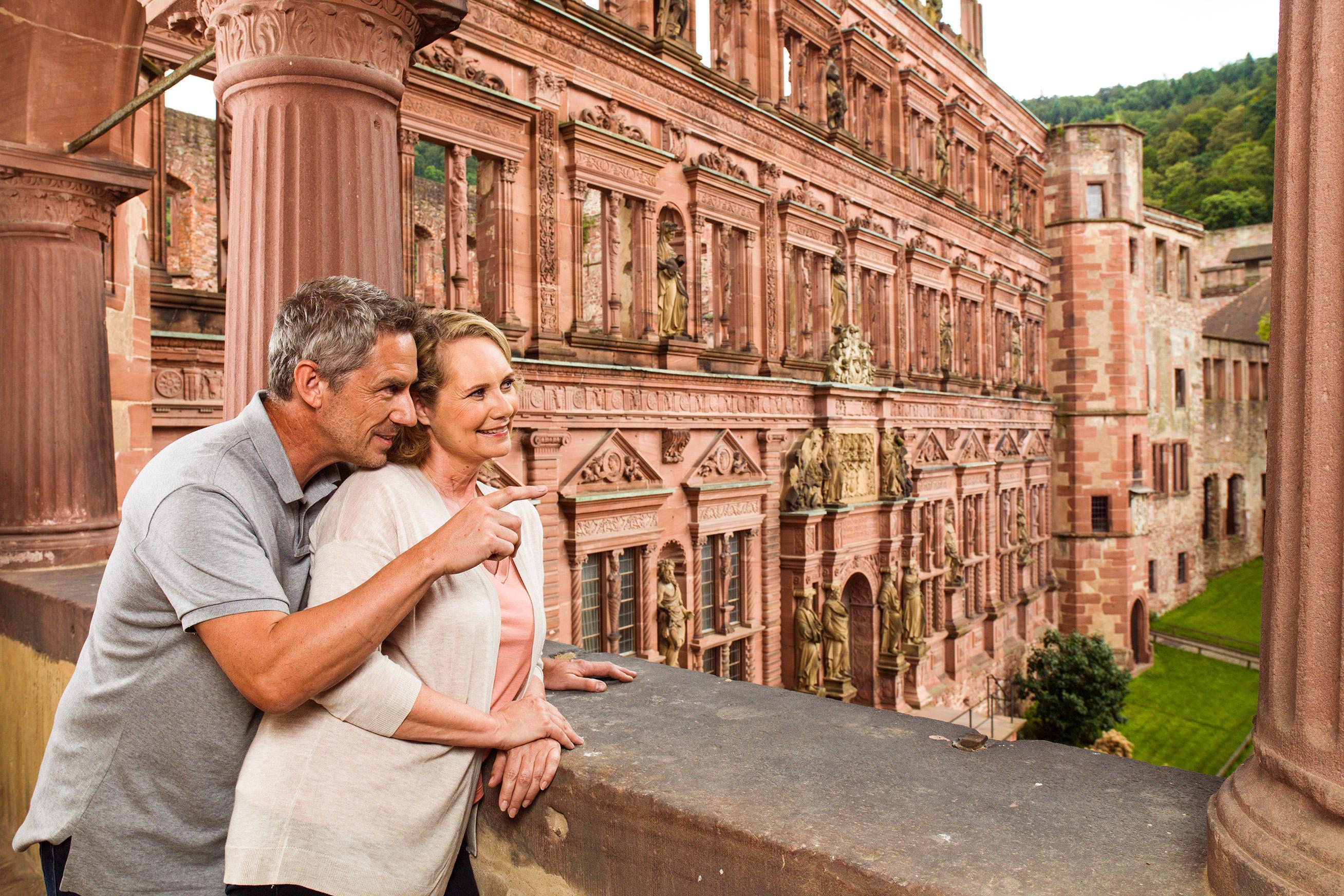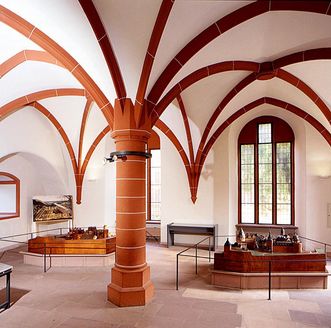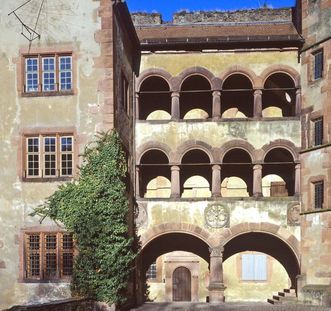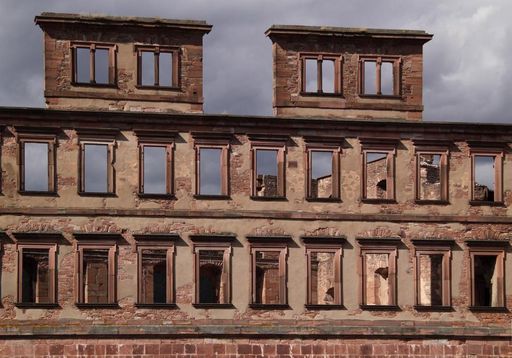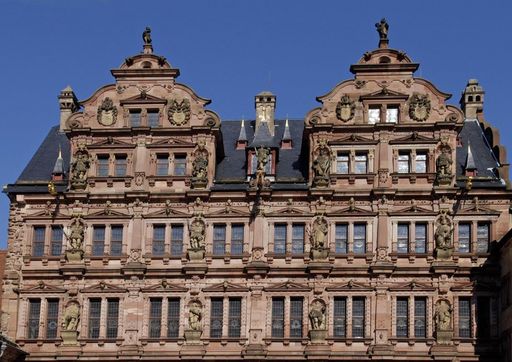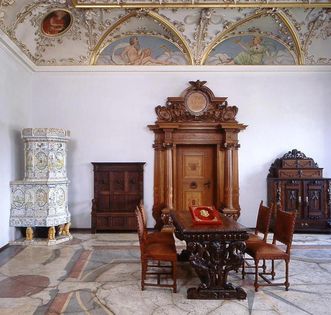Gothic
Secular Gothic structures generally demonstrate their stateliness through monumentality and defensibility, contrary to the delicate Gothic church structures. This is also the case with the Ruprecht’s Wing, the oldest residential castle at Heidelberg Castle. Only its interior, with ribbed vaults and keystones, gives any indication of its status as a castle. A graceful oriel in the library hints at the elegance of Heidelberg's court life in the Late Middle Ages.



